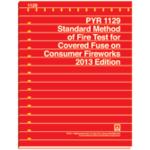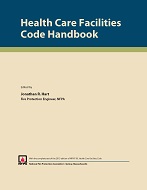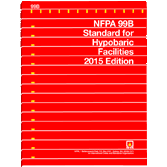Description
Look to new NFPA 484 for advanced fire and explosion safety around all types of combustible metals and metal dusts.
Reflecting the latest research, testing, and fire experience, the 2015 edition of NFPA 484: Standard for Combustible Metals presents widely accepted safety requirements for any metal that meets the definition of a combustible metal in NFPA 484 — including alkali metals, aluminum, hafnium, magnesium, niobium, tantalum, titanium, and zirconium. NFPA 484 addresses the production, processing, finishing, handling, storage, use and recycling of all metals and alloys that are in a form capable of combustion or explosion.
Make sure you know about proper dust capture or collection, housekeeping, and identification of potential ignition sources.
Compliance with the latest edition of NFPA 484 is critical, as fire and explosion hazards are potentially present from operations involving production, processing, finishing, handling, recycling, storage, and use of all metals and alloys that are in a form that is capable of combustion or explosion. In addition, operations where metal or metal alloys are subjected to processing or finishing operations can produce combustible powder or dust are covered by this Standard.
The 2015 NFPA 484 is updated and reorganized for easier referencing:
- Common requirements for all metal types — such as PPE, management of change, dust collection, ignition sources, and hazard analysis — formerly in Chapters 11 through 18 — have been moved into fundamental Chapters 4 through 9.
- Chapter 4 has revised procedures concerning material characterization and determining combustibility and explosibility for metal dusts. Use of either test data or historical data is now permitted.
- Chapter 5 has new requirements for management systems elements, such as management of change, hazard analysis, and PPE.
- Chapter 7 establishes a threshold for fugitive dust accumulations, which is then used to trigger specific requirements related to dust hazard control.
- Renamed Chapter 8: Ignition Sources addresses the control of ignition sources such as hot work, smoking, spark-resistant tools, static electricity and friction hazards. It also still addresses electrical area classification.
Developed in response to fires where fire suppression water was used inappropriately, NFPA 484 is critical to fire safety.
Product Details
- Published:
- 05/19/2014
- ISBN(s):
- 9781455909070
- Number of Pages:
- 151




